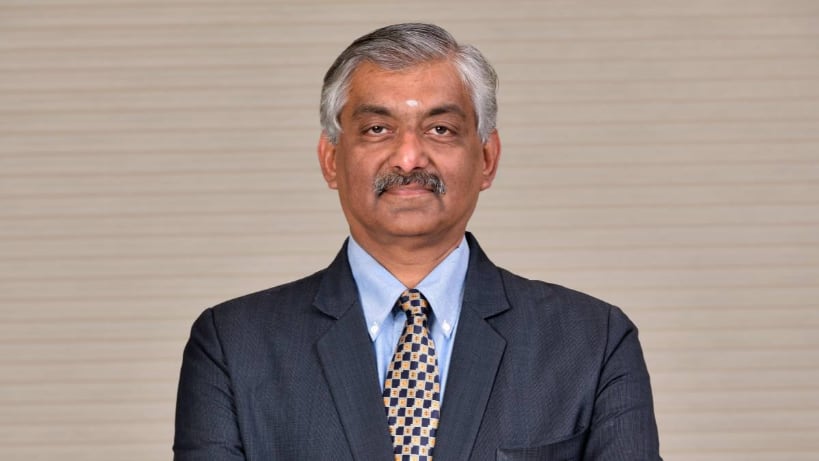AI can serve as a strategic enabler of economic growth, social empowerment, and national competitiveness. Yet, the transformative promise of AI comes with its own complexities.

Mahesh Ramamoorthy, Chief Information Officer (CIO), YES BANK
As India approaches 2047, marking 100 years of independence, the nation finds itself at a pivotal crossroads. The vision of a Viksit Bharat—a developed, inclusive, and globally respected nation—demands not only economic growth but also a reimagining of how technology can transform governance, business, and society.
Among the many transformative technologies of our age, Artificial Intelligence (AI), at this point in time, stands out as the most impactful. Its potential extends far beyond automation or efficiency; AI can serve as a strategic enabler of economic growth, social empowerment, and national competitiveness. Yet, the transformative promise of AI comes with its own complexities. The decisions we make today—about infrastructure, data governance, human capital, and ethical frameworks—will determine whether AI becomes a tool of empowerment or exacerbates existing inequalities. If I were to chart India’s AI strategy for 2047, the approach would be to balance visionary ambition with pragmatic implementation, ensuring that AI drives growth while fostering trust and inclusion.
India is not starting from a blank slate. Over the past decade, we have shown the world that digital public infrastructure can transform access and opportunity at scale. Aadhaar gave every Indian a digital identity. UPI revolutionized payments, creating one of the most inclusive financial ecosystems in the world. The Account Aggregator (AA) framework introduced a consent-based model for secure data sharing, while ONDC is reimagining commerce by making digital marketplaces open and interoperable. These platforms are not just technological successes—they are strategic demonstrations of India’s ability to design, implement, and scale citizen-centric innovation. They show that India can lead not only in adoption but also in creating new paradigms for the world. The next chapter is to extend this ethos into the realm of AI, embedding intelligence into the very fabric of these digital platforms.
Foundation of Trusted Infrastructure
The first imperative in charting an AI strategy for Viksit Bharat is to build a foundation of trusted infrastructure. AI systems thrive on computing power, data pipelines, and cloud ecosystems, but unless these foundations are sovereign, scalable, and secure, they risk creating dependencies that can limit national resilience.
India must invest in sovereign compute capabilities—national AI supercomputing grids that are accessible to enterprises, researchers, and start-ups at affordable costs. These should be cloud-native, interoperable, and designed for openness, enabling innovation without locking participants into proprietary silos. Equally, privacy and security must be built into the infrastructure from day one. With the Digital Personal Data Protection Act (DPDPA) and other frameworks, India is already laying the groundwork. Our AI systems must embed compliance, auditability, and explainability into their very design. Just as UPI created digital rails for payments, India must create national “AI rails”—shared infrastructure that innovators across industries can use to build trustworthy applications.
India’s demographic scale and digital momentum generate one of the world’s richest streams of data. This data—if responsibly governed—can become the capital that fuels innovation, productivity, and new forms of value creation. But without careful stewardship, it can also create risks of exclusion, exploitation, or concentration of power. The Account Aggregator model offers a powerful blueprint. By giving citizens control over their financial data through consent, India has demonstrated how privacy and empowerment can go hand in hand. The same approach can be extended to healthcare, education, agriculture, and commerce. Imagine a future where a farmer shares soil and crop data with an AI advisory system, or a student uses consented education data to access personalized learning platforms. Beyond consent-driven frameworks, India should also create anonymized national datasets for research and innovation. These datasets, curated responsibly, can help Indian AI researchers and start-ups compete globally without bearing prohibitive costs. Equally important is the creation of cross-industry data exchanges that allow businesses and academia to access high-quality data in a structured, affordable manner. By treating data as growth capital—responsibly collected, securely stored, and equitably shared—India can create an innovation ecosystem that is not dependent on external monopolies but driven by domestic strengths.
Education, Skilling, and Research
Technology alone cannot build Viksit Bharat. At the heart of every transformation is human capability. AI will reshape the nature of work, the skills in demand, and the structure of industries. For India, this presents both a challenge and an unparalleled opportunity. Our demographic dividend can become our greatest strength if we invest systematically in education, skilling, and research. AI, machine learning, and data sciences must be embedded into school and university curricula. Beyond this, nationwide reskilling programs should prepare millions of workers—from factory operators to customer service agents—for AI-augmented roles. India must also aspire to be more than a pool of talent for global enterprises. We should establish AI research and innovation hubs, where academia, government, and industry collaborate to solve uniquely Indian challenges—whether in agriculture productivity, healthcare delivery, or financial inclusion. By 2047, India must stand not only as the world’s largest reservoir of digital talent but also as a leader in AI discovery and application.
For India, inclusivity is not an option—it is the very essence of development. AI must not remain an elite tool for large corporations or urban populations; it must be a force that reduces barriers and extends opportunity to all. This requires designing AI systems that are voice-first, vernacular, and multimodal, so that they are accessible to citizens across India’s linguistic and literacy spectrum. In financial services, AI can help banks use alternative data—such as utility payments or mobile transactions—to extend credit to thin-file or unbanked individuals. In agriculture, AI can provide real-time decision support on weather, soil conditions, and pricing. For MSMEs, it can forecast demand, optimize supply chains, and expand market reach. Every design choice must ask the question: does this technology empower the many, or only the few?
National Framework for Responsible AI
Perhaps the most critical dimension of India’s AI strategy must be trust. AI systems that cannot explain their decisions, that perpetuate bias, or that erode privacy will quickly lose legitimacy. To prevent this, India must adopt a national framework for responsible AI—one that emphasizes transparency, fairness, explainability, and accountability. Bias detection mechanisms must be institutionalized, ensuring that AI models reflect India’s diversity and do not entrench systemic inequities. Shared governance models, where regulators, enterprises, academia, and civil society collaborate, will ensure oversight that is broad-based and credible. Here lies India’s unique opportunity. While advanced economies grapple with ethical challenges, India can position itself not only as a leader in AI adoption but as a global standard-bearer for responsible and ethical AI.
My AI Timeline
If I were to chart the journey, I would visualize it in three phases. The first, between 2025 and 2030, must be the foundation decade: building sovereign compute, strengthening governance frameworks, and driving adoption in critical sectors such as BFSI, healthcare, and citizen services. The second, between 2030 and 2040, would be the acceleration decade, extending AI-led transformation to agriculture, MSMEs, education, and manufacturing, and ensuring cross-sector interoperability of AI ecosystems. The final stretch, from 2040 to 2047, should be the leadership decade, where India not only embeds AI in every aspect of governance and industry but also exports its platforms, solutions, and ethical frameworks globally. By then, AI should be contributing significantly to India’s GDP, helping us achieve the scale of a $30–35 trillion economy.
As CIO of YES BANK, I see banking beyond an early adopter and a key catalyst for AI adoption across the economy. BFSI segment is data-rich, deeply regulated, and critical to citizens’ lives—making it the perfect proving ground. AI can enable hyper-personalized journeys, real-time fraud prevention, automated compliance, and new models of financial inclusion. When applied responsibly, these innovations can serve as templates for other industries—demonstrating how AI can deliver both efficiency and inclusion at scale.
India’s AI journey is not just a domestic imperative; it is also a global opportunity. By 2047, we should aspire to shape the global AI agenda—influencing governance frameworks, exporting affordable AI solutions to the Global South, and acting as a bridge between advanced economies and developing nations. Just as UPI has become a global benchmark for digital payments, India’s AI frameworks can become a model for responsible, inclusive innovation worldwide.
If I were to articulate how I would chart the AI strategy for Viksit Bharat 2047, it would rest on five imperatives: build trusted infrastructure, unlock data as growth capital, develop human capital, design AI for inclusivity, and embed ethical governance. The journey to 2047 will demand foresight, collaboration, and persistence. It will require government, enterprises, academia, and civil society to work in concert. But if we succeed, AI will not only accelerate India’s economic transformation—it will help us realize the deeper vision of Viksit Bharat: a nation that is prosperous, inclusive, resilient, and globally admired. This is how I would chart the AI strategy for Viksit Bharat 2047: a strategy that balances ambition with responsibility, and innovation with inclusion.
Empower your business. Get practical tips, market insights, and growth strategies delivered to your inbox
By continuing you agree to our Privacy Policy & Terms & Conditions
